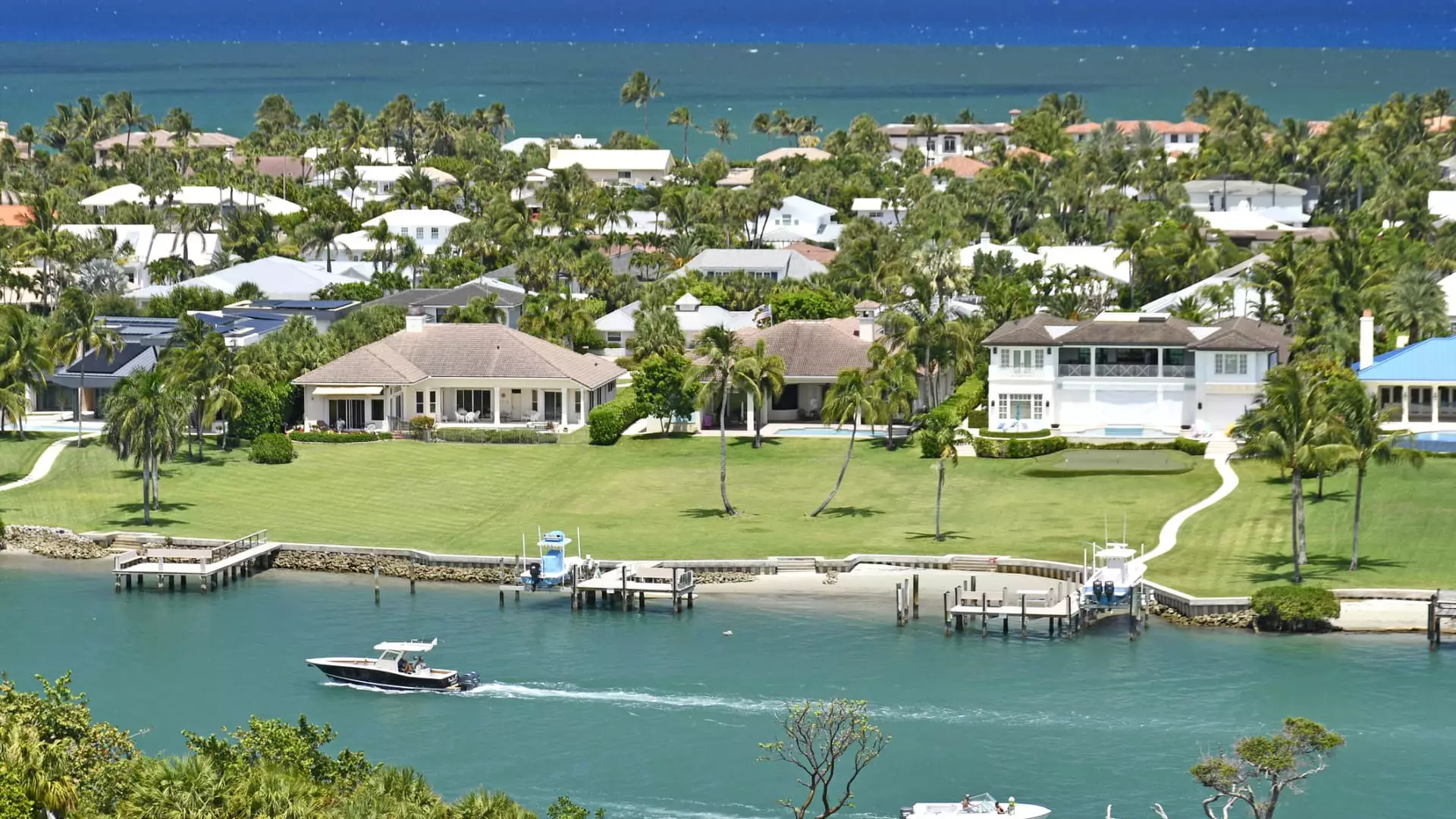The luxury real estate market in 2025 is revealing a troubling yet fascinating fissure that many industry observers have overlooked. While media coverage often lumps affluent buyers into a single homogeneous group, the reality is far more complicated. Recent insights from Coldwell Banker agents specializing in high-end properties expose a growing chasm between the ultra-wealthy—those with net worths north of $30 million—and the merely wealthy. This divide not only shapes market dynamics but underscores broader socio-economic tensions that demand more nuanced understanding.
Ultra-wealthy players continue to wield outsized influence, making high-stakes purchases predominantly in cash to sidestep the financial friction caused by persistently high interest rates. Their access to immense liquid wealth allows them agility and leverage, enabling swift transactions even as global economic clouds loom. Meanwhile, those with sizable, but comparatively modest wealth, face a more cautious landscape. Interest rates and economic uncertainty have dampened their enthusiasm, fostering an environment where hesitation dominates caution and price sensitivity becomes paramount.
Cash Is King, But At What Cost to Market Fairness?
The surge of all-cash offers within luxury real estate points to one stark reality: financial liquidity is the ultimate advantage. According to Coldwell Banker’s President, Jason Waugh, the prohibitive borrowing costs make cash the pragmatic choice for well-heeled buyers. This creates a reinforcing cycle where wealthy individuals with deep pockets capitalize on their resources to snap up attractive properties quickly, reinforcing real estate as a fortress against economic volatility and inflationary pressures.
Yet, this dynamic raises uncomfortable questions about market fairness and inclusivity. The advantage of cash bidding can crowd out even well-qualified buyers who rely on financing, thereby ossifying wealth disparities. As borrowing costs rise, the gulf widens between an exclusive class that can bypass financing hurdles and the numerous affluent but leveraged buyers who remain vulnerable to interest rate shifts and economic shocks. This bifurcation in buyer behavior threatens to entrench exclusivity in luxury neighborhoods, accelerating inequality in asset ownership.
Demand for Excellence: Luxury Buyers Are Savvier Than Ever
Despite this divide, one common thread among buyers across the luxury spectrum is their increasing sophistication and refined expectations. Away from the simplistic perception that luxury buyers blindly chase superficial opulence, agents report that buyers now demand nuanced amenities that demonstrate lifestyle integration, technological innovation, and wellness orientation. Features such as smart kitchen appliances, seamless indoor-outdoor living spaces, and spa-grade bathrooms represent not mere luxuries but baseline prerequisites.
This evolution reflects broader cultural shifts towards experiential living and health-consciousness among high-net-worth individuals. First-time luxury buyers, in particular, exhibit heightened discernment, rejecting generic upgrades in favor of holistic, customized experiences. This trend disrupts old luxury market paradigms built on status symbols alone, steering the industry toward quality and sustainable luxury, albeit still within an exclusive bubble.
Market Volatility: A Double-Edged Sword
The overall luxury real estate market had shown resilience in early 2025, reflecting a preference by ultra-wealthy investors for tangible assets during uncertain macroeconomic conditions. However, the dip in luxury property sales following April’s significant stock market downturn signals that this resilience is neither absolute nor immune to broader financial contagion.
Sales softness in May, particularly dramatic among attached properties that declined over 20%, highlights the fragility beneath the surface. The market appears to oscillate between opportunistic buying by cash-rich investors and retreat by price-sensitive purchasers. The increasing necessity for sellers to reduce listing prices further illustrates a shifting balance of power—buyers, empowered by choice and increased scrutiny, are dictating terms more than in recent years.
This cyclical nature of luxury real estate, coupled with political and economic uncertainties, suggests that while hard assets like real estate remain a popular hedge, the market is far from stable or predictable. The implicit message is clear: wealth alone is insufficient to shelter investors from macroeconomic forces, especially when interest rates and equity markets remain volatile.
A Call for More Balanced Economic Policies
From a pragmatic center-liberal perspective, this widening gap in the luxury real estate sector reveals systemic issues that policy makers can no longer ignore. The concentration of wealth among an ultra-rich minority capable of leveraging cash transactions underscores the urgency for tax and housing policies that promote greater asset accessibility and affordability.
High interest rates, while intended to tame inflation, disproportionately impact middle and upper-middle-class buyers, inadvertently widening inequality in real estate ownership. Market dynamics favoring all-cash purchases effectively create gated communities within luxury real estate, deepening socio-economic divides that threaten social cohesion.
To mitigate these trends, regulatory frameworks should encourage lending terms that enable broader participation and curb speculative buying practices that inflate prices beyond reach for many. Without such interventions, the luxury market risks becoming a symbol of economic exclusivity rather than a robust sector contributing to shared prosperity.

